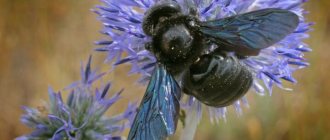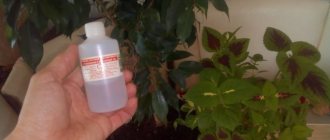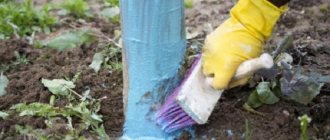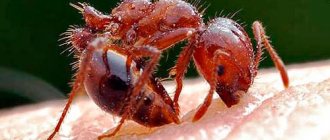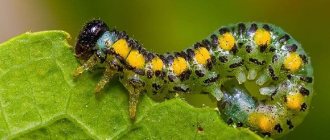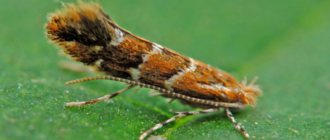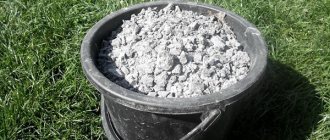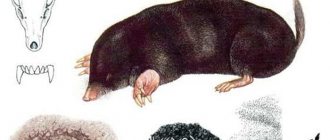Why is it dangerous?
Before starting a war, it is necessary to find out what the enemy is and why he is dangerous.
So, aphids are small insects of the order Coleoptera that parasitize plants. At the moment, there are about 4 thousand varieties of these pests, of which about a thousand species are found in Europe. The different types differ in color and size. Most of these pests do not exceed 2-3 mm in size, although there are varieties up to 7 mm. Aphids vary in color: aphids are known to be white, yellow, pink, green and even black.
Each colony contains wingless and winged aphids. Winged ones are responsible for distribution, and winged ones provide reproduction.
It is known that if there is sufficient food, only wingless aphids appear on flowers, ensuring rapid reproduction. One female is capable of giving birth to three generations of offspring numbering up to 100 thousand individuals in a month.
Aphids are equipped with a special proboscis that allows them to pierce plants and suck out all the juices from them. As they suck out the juices, aphids secrete a sweet liquid, or honeydew, a delicacy that attracts other insects, especially ants.
There are often cases when ants create their own “troops” of aphids for food, protect them, transfer them to new plants, and even take them into their homes for the winter if necessary.
Aphids concentrate on young stems and the undersides of leaves. Injured leaves curl and become deformed, the buds of damaged plants fall off without opening.
Honeydew leads to the development of sooty fungus. This disease slows down the respiration process of flowers and can lead to death.
Leaf aphids quickly weaken young plants by sucking out their cell sap. At the same time, it also secretes poison, due to which the leaves curl, deform and die, the shoots stop growing, and the tops become bent. Sweet secretions (natural waste) contaminate the leaf surface and disrupt the normal functioning of plants.
Through their saliva, aphids are capable of infecting plants with harmful viruses, which can cause widespread damage, especially in gardens or professional rose gardens. When aphid colonies become too large, the leaves and young shoots dry out and die.
Aphids cause the greatest damage to young seedlings of fruit trees.
Aphids can produce up to 50 generations per summer
If you do not use any special techniques against this pest, the aphid will cause significant damage to any, even the most well-groomed summer cottage, in a completely natural way, without straining, producing up to 50 generations over the summer. It is not without reason that in the northern hemisphere alone, about 450 species of leaf aphids are considered among the most significant pests of agriculture, forestry and gardening.
Aphids need to be fought
It is extremely difficult to fight aphids: they multiply rapidly and incessantly. Therefore, we must try to get rid of it faster than it will rid us of the harvest.
Aphids are pests that, by drinking the sap of a plant, destroy it. This is especially true for young shoots and fruit trees. After meeting it, the leaves curl and shoot growth stops. Accordingly, in such a situation, the entire future harvest is called into question, which makes gardeners very nervous.
Aphids on flowers
Black aphids attack flowers and are discovered during winter storage of planting material. Green aphids on flowers multiply quickly and unnoticed by the grower, hiding under the scales of the bulb and sucking out the nutritious juice. Sick bulbs lose strength and cannot grow into strong and healthy flowers.
Black aphids also attack bulbous flowers. This species is more active in hot weather.
The pest lives on leaves, stems, shoots and sucks healthy sap. Plants change shape, becoming ugly, under the influence of toxins released by aphids.
Aphids on flower leaves present a nasty sticky dew that looks like excess sap.
Aphids also attack bulbous flowers when grown indoors, for example in a greenhouse. Find out how to escape from it in this case here!
Features of aphids
An aphid is a small insect with an oblong body, long legs, and its abdomen is wide and pointed. Most often, white aphids settle on house flowers, but there are many other species, both wingless and winged. The insect can be colored green, pink, pale yellow and black.
The pest is distinguished by its ability to quickly adapt to any habitat and its incredibly fast reproduction. It forms entire colonies. Just one female is capable of laying up to 100 larvae, and each of them becomes an adult in just half a month. Winged aphids are engaged in discovering and capturing new places suitable for life and food, and the function of wingless aphids is to reproduce offspring. Most often they settle on buds and young shoots, and they can also be found on the underside of leaf blades.
Where do black aphids come from on cherries?
The spread of aphids on cherry trees is observed in spring and summer. Hot weather has a beneficial effect on the reproduction of small insects. Typically, aphids settle under the leaves, along the veins where the sap flows. The body of the aphid is soft and ovoid in shape.
On cherry trees, wingless black individuals are more common. But soon the females grow wings. Flying insects travel freely, parasitizing young shoots.
Reasons for the appearance of black aphids on cherries:
- Plants on which this type of insect reproduces (for example, garden cornflower, legumes, etc.);
- Favorable weather conditions;
- Untimely thinning of tree branches;
- The appearance of garden ants that spread aphids to the tree.
Insects multiply quickly, so control of them should begin at the first appearance of individual individuals. How to notice that aphids are eating cherries?
- Firstly, small black pests on a green leaf are visible to the naked eye.
- Secondly, young leaves begin to curl and turn yellow, buds and flowers become deformed, and fruits lose their juiciness.
- Thirdly, as a result of the sugary secretions of aphids, a viral sooty fungus settles on the cherry and the leaf blades turn black.
An attentive gardener will notice that anthills form around the cherry plantations. Ants tickle aphids to release a sweet liquid that they feed on.
Such “friendship” can destroy the cherry harvest and the green part of the tree. We have to urgently look for a remedy for aphids on cherries in order to save the crop and green spaces.
What to consider when fighting aphids
Let us repeat, before we rush at the enemy, we need to understand where this problem “grows from” in order to correctly and wisely approach the fight against the pest.
Aphids feed on plant sap by piercing its skin with their proboscis. Old hard leaves are too tough for her; she needs the most delicate leaves and buds. This means that the most likely places of damage are the youngest parts of the plants. Simply put, the tops of bushes and the underside of leaves. Therefore our task is
How do aphids appear on plants?
Most often it is carried by ants. (The interaction of ants and aphids is described in detail in the article
Aphids and Ants)
. The relationship between these little insects is very touching and evokes a kind smile, which, however, quickly disappears from the face when looking at the twisted leaves
currants
and buds of your favorite flowers strewn with parasites)
So, the ants need the sweet syrup that the aphids provide by feeding on the sap of the plant. Therefore, the ants will constantly deliver more and more Socopians to the young leaves. Moreover, they will also protect them from all enemies. Therefore, our task is to separate them, to block the ants’ access to the aphids.
Who can help us in the fight against aphids?
Aphids have many natural enemies, both insects and birds.
In addition, there are also plants that aphids will avoid. And as you know, the enemy of my enemy is my friend) Therefore, our task is to find ways to attract these friends-helpers to the fight.
Are all methods of control suitable?
Aphid colonies are always numerous, they infect many plants, so treatments will have to be carried out repeatedly.
The use of chemicals will inevitably lead to the fact that the earth and plants, saturated with poisons, will sooner or later send them all directly into our bodies. Therefore, our task is to find those methods of struggle that will not kill ourselves.
But these methods exist, and they are becoming more and more numerous, because neither science nor country folk art can be stopped.
Where to look for black aphids?
Carefully inspecting each plant and detecting black aphids in time in a garden with a large area is not an easy, and sometimes even impossible, task. Therefore, you need to know exactly where to look for it, taking into account the lifestyle and feeding methods of this pest.
The body color of any species of aphid, as a rule, corresponds to its taste preferences - the color of the fruits of the plants whose sap it feeds on. This means that in the case of black aphids, you should look first on tomatoes, eggplants, grapes, cherries, cherries, viburnum and currants. This parasite is also found on cucumbers from the bottom of the leaves.
Black aphids feed by piercing the skin of plants with a thin, long proboscis. Only the strongest individuals of the family can bite through rough old foliage, while pliable, delicate leaves and flowers save even weak pests from hunger. Therefore, you need to look especially carefully on young parts of plants, new shoots and flowers.
Another sign that may indicate the presence of black aphids is increased activity of ants in a certain part of the garden. Aphid colonies like to settle near anthills, counting on the protection of ants that feed on their waste products.
Where do aphids come from?
Many gardeners do not know where aphids can appear on a home flower? This can happen for a variety of reasons. For example, a winged female may well fly into an open window or balcony. An insect can also get into the house on the fur of a pet, or even the person himself can carry it on his clothes or other things.
Aphids can be found on a recently purchased flower or on a bouquet given to you, and they are also sometimes present in the substrate used for planting or replanting flowers. There is a high probability of aphids appearing if you move flowers outside during the warm season, and then bring them back into the house with the onset of cold weather.
Prevention measures:
- In order to prevent aphids from appearing on your “green pets,” it is recommended that newly purchased plants be quarantined. To do this, they are placed away from other flowers for a while. It is also recommended to give this plant a warm shower.
- The soil mixture that you are going to use for planting or transplanting should be placed in the freezer for a while. Severe cold can clear the substrate of both adults and larvae.
The main signs of aphids
Preventive measures are ineffective against aphids, since the infestation is barely noticeable. However, there are a few tips to help keep your indoor plants safe.
- It is necessary to periodically inspect all plants for the presence of pests and fungi. Particular attention should be paid to diseased plants, as they are the most vulnerable to aphids.
- Make sure that ants do not appear in the house, as they are very “friendly” with aphid colonies.
- Systematically give indoor plants a shower and trim off damaged shoots.
- It is recommended to keep new flowers away from the rest for 7-10 days to eliminate the risk of infection from a new plant. If after this period no pests are found on the new flower, the quarantine can be canceled.
- If airing was done outside, you must carefully check all the flowers before bringing them into the house.
- Wash donated bouquets under running water and keep away from indoor plants.
- Flea shampoo can serve as a preventive measure against aphids. For the solution, you need to take 1 cap of the product per 0.5 liters of water. This shampoo must be sprayed onto the flowers from a spray bottle.
- Monitor the room temperature. Heat and stuffiness promote the spread of aphids.
- If one of the plants is heavily infested and no methods against aphids no longer work, it is necessary to get rid of it in order to protect the remaining flowers.
- To protect indoor flowers, you can place fragrant pelargonium on the window; it will repel unexpected insects.
We invite you to familiarize yourself with: Do-it-yourself greenhouse: the simplest structure for beginners
Now you know all the secrets of how to fight aphids on indoor plants.
In order to quickly get rid of aphids, you need to detect them as quickly as possible and immediately begin to fight them. To do this, it is recommended to systematically inspect your home plants. If you are lucky enough to find aphids when there are still very few of them, then all you need to do to get rid of them is to crush the adults, as well as all the larvae.
- The plant becomes less attractive and looks sickly.
- On the surface of the above-ground part of the bush you can find very small punctures that aphids leave during their life processes.
- The surface of the stems and foliage becomes sticky from the honeydew, their color gradually changes to black, they curl up and dry out.
- The open buds become smaller and deformed; they quickly fade and fly off.
- Near the affected plant you can find ants who are trying to get their favorite treat.
Aphids can greatly harm any home flower. This pest is considered one of the main carriers of viral and fungal diseases. For example, in those areas where honeydew appears, sooty fungus forms. Aphids pose the greatest danger to indoor crops such as orchids, roses, fuchsias, hyacinths, palmaceae, hibiscus, chrysanthemums, spathiphyllums and cyclamens.
As soon as aphids are found on the plant, it should be moved away from other flowers so that the pests cannot settle in them. After this, you can begin to fight insects.
Symptoms of black aphid infestation
In advanced cases, aphids can be detected even with the “naked eye” by clearly visible signs of the disease, which can be general or specific.
Signs that are characteristic of all garden and vegetable crops without exception:
- the plant loses its attractiveness, looks depressed and unhealthy;
- on the outer part of the leaves small punctures from sharp proboscis are visible;
- a cluster of small black pests or their eggs is visible on the undersides of the leaves;
- diseased leaves are shiny and sticky with honeydew, unpleasant to the touch;
- leaves curl, lose color and begin to wither;
- opened flower buds become deformed, become smaller and fall off.
Specific signs of aphid damage (found only in red and black currants, and not characteristic of other plants):
- Large burgundy-colored bubbly swellings appear on the leaves of red currants, on the reverse side of which insects settle.
- In black currant, the apical leaves are strongly elongated and curled at the edges. Similar symptoms are observed in viburnum.
Herbal decoctions
Despite the fact that herbal infusions and decoctions are not chemicals, one should not lose sight of the fact that they:
- in high concentrations can cause burns to plants;
- can be dangerous not only for aphids, but also for other insects;
- at least some of them are poisonous to humans.
Therefore, you need to use such drugs wisely, observing safety precautions, formulation and
- Before first use, any solutions must first be tested on a limited area, and only then, after making sure that the product is effective, should it be used over the entire area;
- fruit crops can be treated with decoctions and infusions during the budding period, immediately after flowering and no later than 14-40 days before harvest;
- It is recommended to treat berry crops with infusions before flowering and after the berries are picked;
- Vegetable crops can be sprayed for the last time with herbal infusions no later than a month before harvesting the fruits.
By following these simple rules, you will cause irreparable damage to the aphids, and will not harm yourself

